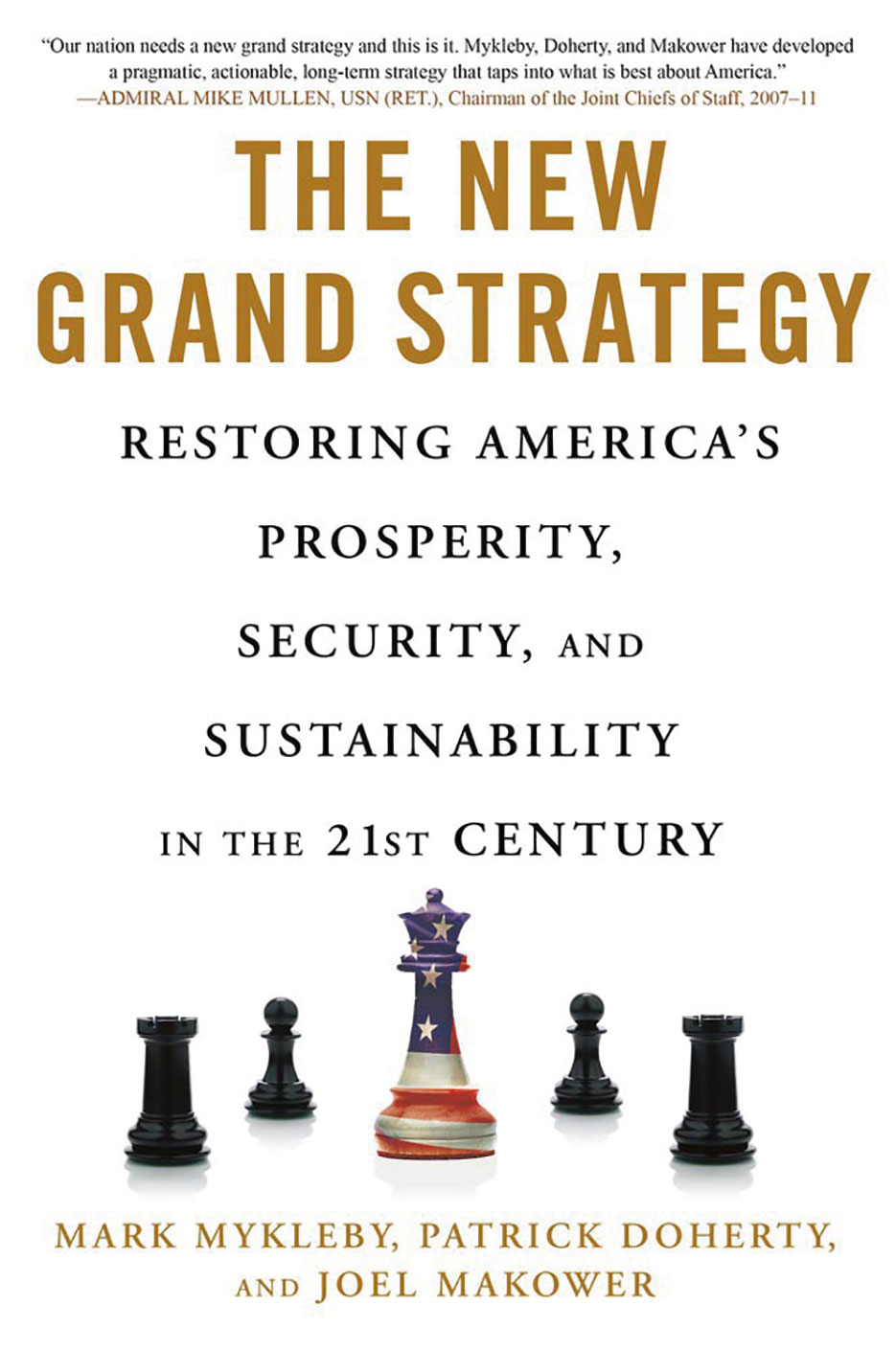Michael D. Russ
The New Grand Strategy
24 èþëÿ 2017

April 1, 2017 — The New Grand Strategy: Restoring America's Prosperity, Security, and Sustainability in the 21st Century
By Mark Mykleby, Patrick Doherty, and Joel Makower
St. Martin's Press, 2016
288 pp. $18.61
ISBN: 978-1250072306
Reviewed by Michael D. Russ
In The New Grand Strategy, the authors correctly assert that the United States cannot rely on the bureaucracy of international and national entities to move forward and purposefully lead change, when and where it matters. This book is a call to action in which a synthesis of strategy, planning, and operations trumps analysis, avoids trivial pursuits, and catalyzes action by “we the people.” Whereas “grand strategy” is largely debated in academia and think tanks as an abstraction, strategy requires purpose and implementing operations. It also necessitates frequent institutional reflection, refinement, and changing of paradigms that inhibit the ability to adapt to a changing world order. Though the book may not account for every element that could encompass “grand strategy,” its recommendation that strategy be purposeful, systematic, and forward thinking to ensure that resilience and sustainability are the foundation of longevity and continued greatness should be heeded.
The New Grand Strategy’s key theme is that “we the people” must lead the shaping and rebuilding of the world, the bid for resilience and self-sustainability. For Americans, leading change begins in our own communities and by example, extending influence to all global residents. The days of expending vast amounts of time and resources on seemingly “important” current issues and treating symptoms must give way to addressing root causes and investing for the long term in our most precious asset, the human. Though the authors propose a way to address the challenges forecast in the 21st-century narrative, the nature (versus the character) of their argument is sound: addressing generational challenges, demand, and sustainability in a systematic solution that shows that “the whole [is] greater than the sum of its parts” is integral to collectively formulating strategy.
Within this theme, The New Grand Strategy addresses three aspects of today’s environment and suggests how designing and implementing a strategy where the “representative democracy” supports “demand-plus-capital” sustainability is possible. The first section, “The Challenge of a Generation,” outlines the idea that implementing a plan to tap into the “vast stores of pent-up capital” in response to “new pools of demand” is a powerful mechanism for the rapid, sustainable growth of a “secure America.” The next section, “Pools of Demand,” shows that collective security is at risk due to the fact that it is caught in a whirlpool of self-centered activities that encourage and “incentivize waste” rather than reward “resource efficiency.” In the last section, “Full-Spectrum Sustainability” is touted as integral to multilevel community resilience and prosperity and focused on the long term rather than looking backward to “keystone industries designed for the last economic engine.” The authors also profess the need for a “purpose driven application of . . . resources to . . . synergistically converge with, reinforce and leverage one another.” The major implication is that Americans need to create a cycle in which demand, skill, diversity, and global systems combine to ensure sustained, systemic resilience and prosperity becomes and remains the foundation to our security. This is a broader definition of grand strategy than many military readers will initially appreciate, but it bears strong consideration for our greater overall security.
The altruistic and idealist character of The New Grand Strategy may be both the strongest and weakest feature for readers. Ideas such as bringing together public, private, and civil sectors in an integrated and coordinated system and aligning long-term planning as the essence of community sustainability and resilience may be difficult to compartmentalize. Moreover, collectively understanding that efforts to impact and achieve successes at the local levels inevitably engender productivity at the highest levels of the Nation and world may be seen as a stretch to attain. However, this is the challenge the text argues we undertake with some urgency. I agree with the authors that the above is possible because Americans and global citizens embrace liberty and understand the communal aspect of preserving it community. It will take time to think, create, implement, and iterate a strategy that works.
The New Grand Strategy is pertinent to all sectors of society. When building resilient, sustainable communities, we can achieve positive, distinct gains for all citizens of the world when we strive for and achieve collective impacts. Moving forward to address generational challenges and the issues of demand and sustainability systematically is going to be difficult, but it is also our greatest responsibility. The authors are clear: with “a spirit of innovation, a stubborn grit, and an irrepressible belief that nothing is beyond our grasp,” we will move forward. JFQ
Âåðíóòüñÿ íàçàä